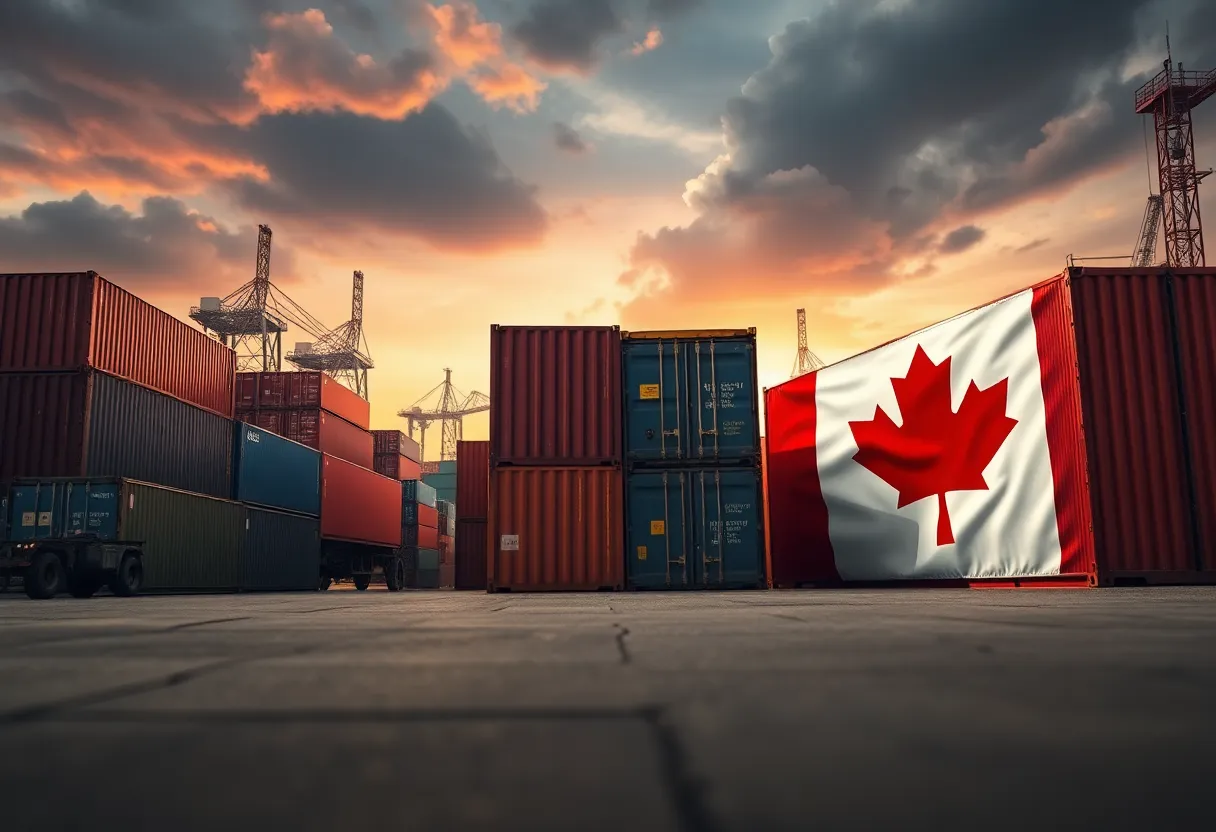News Summary
President Donald Trump has announced a 35% tariff on imports from Canada, effective August 1, escalating trade tensions between the two countries. This decision comes after Canada’s retaliatory tariffs on U.S. goods. Tariff justification ties to issues surrounding fentanyl trafficking linked to Canada, and could signify a broader strategy of implementing increased tariffs on other countries as well. The U.S.-Canada trade relationship, significantly interlinked, faces uncertainty as negotiations proceed.
Trump’s Bold Move: 35% Tariff on Canadian Imports Starting August 1!
In a surprising twist in the ongoing trade saga, President Donald Trump has announced that he will impose a hefty **35% tariff on goods imported from Canada**, effective August 1. This marks a significant jump in tensions between the U.S. and Canada, both of whom have relied on each other as important trading partners for many years.
The announcement comes as Trump expressed his frustration over Canada’s recent retaliatory tariffs on U.S. goods — a tactic that has upset many in the American market. This latest move is not just another press release; it represents a major escalation in the trade war that has seen both countries exchanging blows for some time now.
The Reasons Behind the Tariff
Trump has attributed the need for such a steep tariff to issues involving **fentanyl trafficking**, which he believes are linked to Canada. It’s worth noting that the U.S. currently has a **10% tariff** on nearly all foreign goods, meaning that Trump is considering doubling that rate across the board.
In addition to the Canadian tariffs, Trump has indicated he plans to apply **blanket tariffs of 15% to 20%** on other countries that have yet to negotiate trade deals with the U.S. The question now is: How will Canada respond to this hefty fee?
The Importance of the U.S.-Canada Trade Relationship
Canada plays a critical role in U.S. trade, with the figures showing just how interconnected these two economies are. Last year, Canada imported **$349 billion worth** of goods from the U.S. while sending back **$413 billion** worth of Canadian products. It’s a vital economic relationship that many believe should be nurtured, not threatened.
Trump’s administration recently delivered **tariff letters** to Canada, marking it as the largest trading partner to receive such communication this week. As ongoing negotiations are expected to wrap up by **July 21**, tensions are high, and many are left wondering what comes next.
A History of Tariff Threats
This isn’t Trump’s first foray into tariff territory. Back in November 2024, he hinted at **25% tariffs on all Canadian and Mexican products**, citing concerns over immigration and the illegal drug trade as the basis for these alarming fees. Adding fuel to the fire, his administration has previously slapped tariffs on steel and aluminum at a rate of **50%**, plus an eye-popping **25% on most vehicles and car parts**.
In response, Canada has retaliated against U.S. tariffs, imposing **25% tariffs on non-USMCA-compliant vehicles** along with various other tariffs targeted at U.S. exports. This seesaw action has complicated the trade landscape considerably, and negotiations are ongoing.
Efforts to Create Common Ground
Efforts have been made to ease tensions. For instance, Canada had previously agreed to withdraw a proposed **digital services tax** aimed at American tech firms in the hopes of smoothing out trade discussions. Canadian officials, along with prominent figures like Mark Carney, have asserted that they are making strides in combating the fentanyl crisis — a point they hope will promote constructive dialogue.
But the Canadian opposition leader, Pierre Poilievre, has called out the tariffs as an **unfair attack** on the Canadian economy, suggesting that they could have long-term consequences for citizens and businesses. Moreover, reports indicate that the U.S. trade deficit with Canada soared to **$62 billion last year** amidst these escalating tensions.
The Road Ahead
As the clock ticks down to August 1, it remains to be seen how Canada will respond. Negotiations may bring some resolution, or this tariff showdown could further strain relationships. One thing is for sure: Both countries are in a precarious position, and the outcome will affect many lives and businesses on both sides of the border.
So, keep your eyes peeled — it’s sure to be an interesting few months ahead in the world of trade!
Deeper Dive: News & Info About This Topic
- CNBC: Trump Announces 35% Tariff on Canada
- Wikipedia: Trade War
- Reuters: Global Markets Wrap-up
- Google Search: Trump Canada Tariffs
- AP News: Trump and Canada Tariffs
- Encyclopedia Britannica: Tariff
- Bloomberg: Trump to Impose 35% Tariff
- Google News: Trump Tariffs

Author: STAFF HERE AUGUSTA WRITER
The AUGUSTA STAFF WRITER represents the experienced team at HEREAugusta.com, your go-to source for actionable local news and information in Augusta, Richmond County, and beyond. Specializing in "news you can use," we cover essential topics like product reviews for personal and business needs, local business directories, politics, real estate trends, neighborhood insights, and state news affecting the area—with deep expertise drawn from years of dedicated reporting and strong community input, including local press releases and business updates. We deliver top reporting on high-value events such as Arts in the Heart Festival, Westobou Festival, and Masters Week. Our coverage extends to key organizations like the Augusta Metro Chamber of Commerce and Greater Augusta Arts Council, plus leading businesses in manufacturing and healthcare that power the local economy such as Textron Specialized Vehicles, Cardinal Health, and Nutrien. As part of the broader HERE network, including HEREAtlanta.com and HERESavannah.com, we provide comprehensive, credible insights into Georgia's dynamic landscape.





